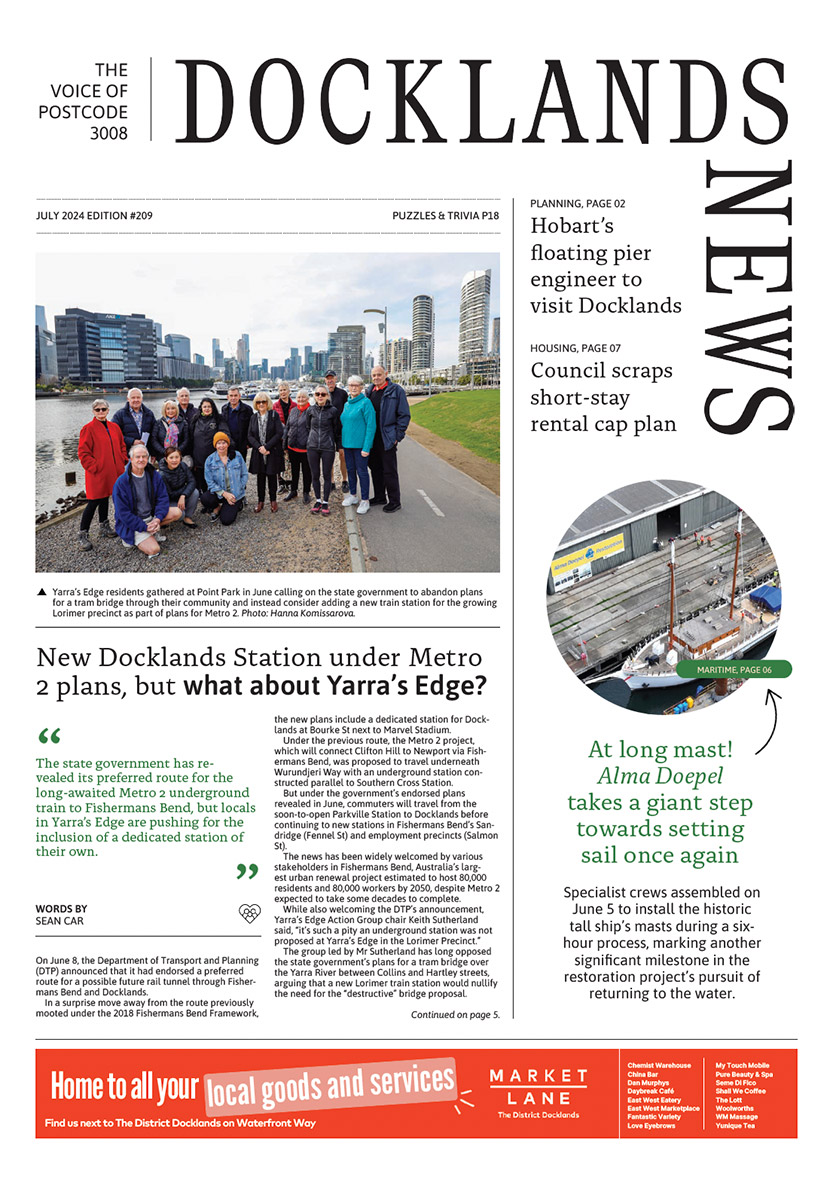Frozen planning apps move through the pipeline
By Meg Hill
The first of 26 Fishermans Bend development applications that were “called-in” by the Minister for Planning in 2018 received the endorsement of the City of Melbourne in December.
The 26 applications were frozen while new planning controls for the precinct were drawn up. In announcing the freeze, Minister for Planning Richard Wynne said the government was “fixing up” the former Liberal Minister for Planning Matthew Guy’s “mess”.
“We’re fixing the mess Matthew Guy created when he rezoned swathes of land overnight to benefit a few fortunate landholders, in actions roundly condemned by an independent review panel,” he said.
“This Framework will make Fishermans Bend a community – rather than a concrete jungle – with schools, public transport and green, open spaces to meet friends and kick a footy.”
The government said the proposed developments were inappropriately dense. The frozen applications were referred to an independent advisory committee for analysis.
The first application was considered by the Future Melbourne Committee on December 8. It was for a 29-storey mixed-use tower at 111 Lorimer St, incorporating office, retail and apartments.
Although the Lorimer precinct of Fishermans Bend has a preferred maximum height of 18 storeys, councillors said the proposed height was acceptable.
The original 2017 development application proposed a 40-storey tower.
“Considering the fact that there are a number of other developments in the Lorimer Precinct of Fishermans Bend which do exceed that preferred height and I think more particularly that the context of this particular site – given that it has significant space around it and does not appear to cause any adverse overshadowing impacts – means that 29 storeys is acceptable,” City of Melbourne planning chair Cr Nicholas Reece said.
Cr Rohan Leppert also said that he thought the height was fine “on balance”.
Affordable housing mechanisms
But the proposal raised a new question for planning – how to achieve affordable housing goals in urban renewal precincts.
The motion of endorsement by the ouncil – which advised the Minister for Planning that the City of Melbourne supported the proposal subject to certain conditions – was amended by Cr Rohan Leppert in an attempt to clarify affordable housing mechanisms.
The developer proposed an internally managed, “build-to-rent” model for its 20 proposed affordable housing units.
“In accordance with the applicant’s preferred model (build-to-rent), local housing needs may not be adequately addressed and once on-sold, units may no longer be occupied by eligible tenants,” a report from management read.
City of Melbourne planners said a better model would be to transfer units to be managed by an external registered housing provider – but did not include it as a proposed condition.
Cr Leppert said the proposal, as it stood, had the potential to create an “enforcement nightmare” in urban renewal precincts.
“My concern with this is that … wherever we may have voluntary affordable housing contributions in the future, if we start our very first application and set the precedent that the affordable housing mechanism is a bit of a choose-your-own-adventure, we are going to create an enforcement nightmare,” Cr Leppert said.
An amended motion was passed that advised the Minister for Planning to require the developer to enter into a binding agreement with a registered housing agency for the provision of affordable housing •

Neighbourhood Watch and RACV launch apartment crime prevention program








 Download the Latest Edition
Download the Latest Edition